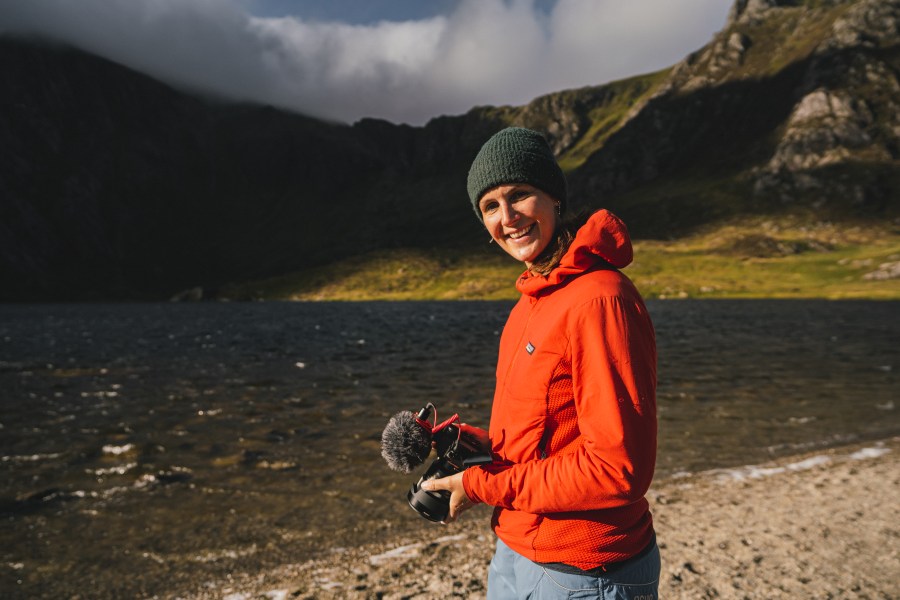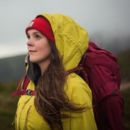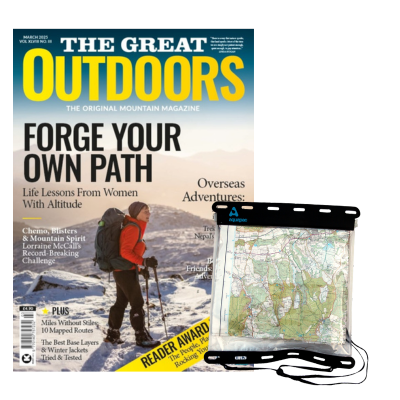Discover the true meaning of ‘hiraeth’ with adventure films crafted by Emma Crome, Creative Director at Coldhouse Collective.
When she left Devon where she’d spent her childhood “tearing about” the countryside climbing trees and reading Enid Blyton books, it wasn’t long before Emma Crome became homesick. Yet, holidays and visits to see her Great Aunt and Uncle in Fairbourne, tucked between the sea and mountains in North Wales, still offered “unbridled freedom”. Introduced to Dartmoorian hillwalking by her parents, nine-year-old Emma was happy hiking miles of the Mawddach Estuary learning about local history. Cadair Idris was her first mountain and young Emma had pinned a map of it next to her bed back home. “When I returned to school, I’d be so depressed – I just wanted to be back in Wales.” Now. filmmaker in her forties, Emma recently relocated to Eryri – “just above the Afon Prysor gorge in a beautiful fragment of temperate rainforest” – with her partner Guy and spaniel Merryn. “As I get older I’m drawn to these ‘in between’ places more than mountaintops,” she tells The Great Outdoors. Here, at the edge of the Rhinogydd, Emma now realises she’d been experiencing a lifetime of ‘hiraeth’ – a deep sense of longing for something akin to home – until she made her move to North Wales.
Main image: Emma Crome in front of the camera in Eryri. Credit: Lena Drapella
We talk with Emma about her film Adra – the Welsh word for ‘home’ – which explores how a climbing community of ‘misfits’ found belonging in the Welsh hills, as well as the ancient heritage of the landscape and its sense of timelessness.
TGO: How did you discover your love of adventure?
Emma: I grew up in South Devon on the edge of Dartmoor National Park. I think my love of adventure – aside from being introduced to hiking from a young age – actually came from reading Enid Blyton books like the Famous Five and the Red Wall series by Brian Jacques. I was a very idealistic child and spent a lot of time up trees and tearing about the countryside with my best friend. As I got older I began reading climbing and travel literature and was enthralled by the notion of a ‘wild’ life. But actually this didn’t come until I was in my late twenties and early thirties. I had such a deep rooted upbringing in Devon that I clung on to that for many years – I was super homesick when I first went away to university! The confidence to live more adventurously only came from experiencing a more contained lifestyle in my 20s, which allowed me to reevaluate and find my way back to my original goals and ambitions. Since then, in the last 10 years, I have travelled and worked around the world, documenting varied stories through film and photo campaigns, from the Bedouin in Wadi Rum to the rural community in the Shetland Isles, and closer to home documenting the climbing and outdoor community in the UK.
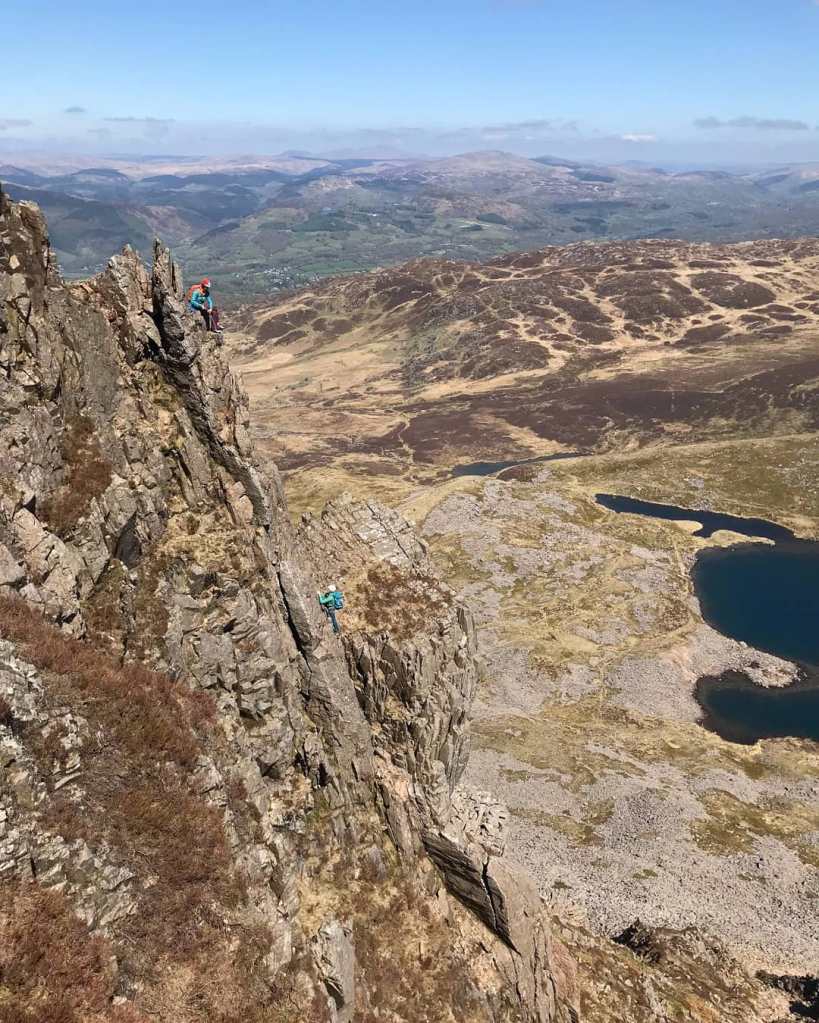
Climbing the the Cyfrwy Arete on Cadair Idris. Credit: Emma Crome
TGO: Where did you spend childhood and what ultimately drew you to Eryri?
Emma: I was born and grew up in Devon, but from the age of 9 I spent most of my half term holidays with my Great Uncle and Aunt in Fairbourne, North Wales. I felt this unbridled sense of freedom there, tucked between the sea and the mountains, I felt this draw to the landscape, it felt like home. Cadair Idris was my first mountain and I adored exploring and swimming in the Blue Lake above Fairbourne. I volunteered on the Fairbourne and Barmouth steam railway and played football with other kids on the rec ground in the village. My Great Uncle and Aunt hiked for miles around the Mawddach Estuary and taught me a lot about the local history. When I went back to school I’d be so depressed – I just wanted to be back in Wales. I had photos and a topo map of Cadair Idris pinned right next to my bed that I would stare at before going to sleep each night! I finally moved to Cymru 3 years ago, just 30 mins from Fairbourne. In recent years I came across the Welsh word “hiraeth”, which has no direct English equivalent word, but translates as ‘a deep sense of longing for something akin to home”. I realise now that “hiraeth” is what I have been experiencing all these years.
TGO: Can you tell us about your home landscape and what inspires you about the Welsh mountains both personally and professionally?
Emma: I live just above Ceunant Llennrych and the Afon Prysor gorge, a beautiful fragment of temperate rainforest that was once more prolific across the west of the UK and Ireland but now only exists in small pockets. As I get older it’s these “in between” places that I feel drawn to more so than the tops of mountains. I work from home when I’m not on location, and so often my lunch breaks and evenings are spent walking in the woods and swimming in the river. The landscape around me is quite varied – the northern edge of the Rhinogydd, farmland, crop plantation, a reservoir, hydro pipe and the Dwyryd river all jostle for space next to the rainforest. It all feels very wild but at the same time is a working landscape with a compelling cultural heritage. I think the stories one can stumble across in these rural communities through the history and Welsh toponymy are a treasure trove.
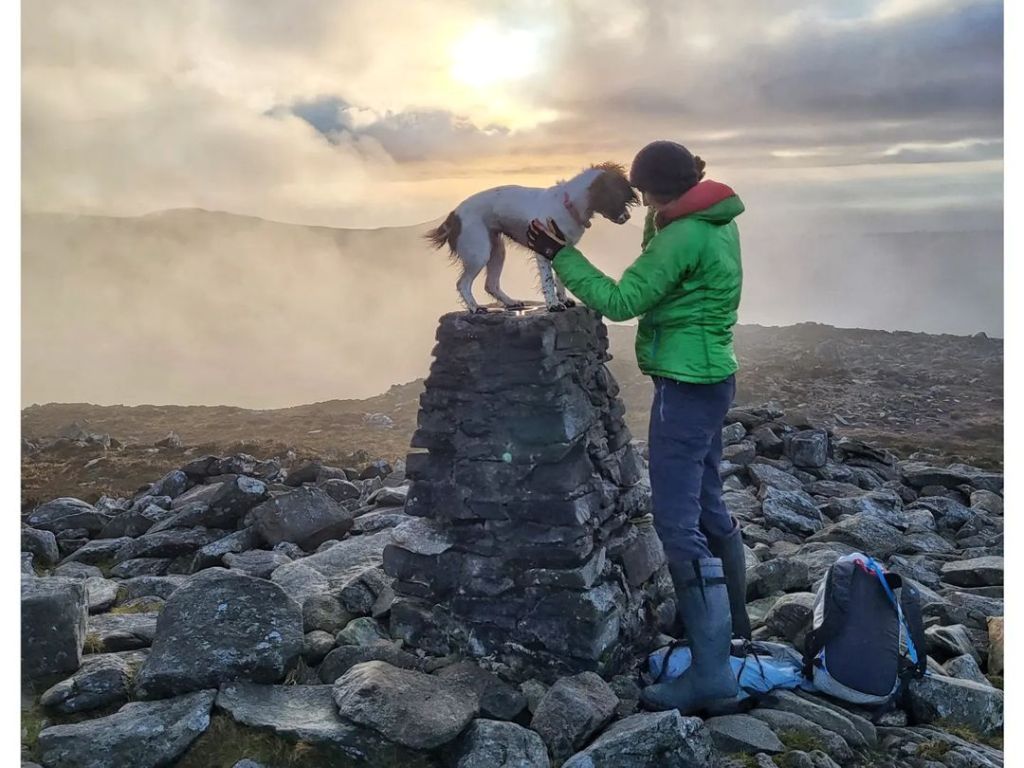
In the Rhinogydd. Credit: Emma Crome
TGO: When did you first pick up a camera and how did that develop into a career combining your directorial craft and your passion?
Emma: I didn’t pick up a camera professionally until I was in my early thirties. I studied film and television at Aberystwyth University and always wanted to be a writer, but fell away from that ambition in my 20s and worked in outdoor retail, then in marketing and PR for Rab and Lowe Alpine. I met Matt Pycroft who had just started his production company Coldhouse Collective, and saw an opportunity to combine my love for storytelling and creativity with my experience in the commercial side of the outdoor industry. It was a bit of a whim and a prayer as I jumped ship from a secure full time job to a freelance part time role, but the risk payed off. In the last nine years I’ve been a part of taking Coldhouse from a start-up business to a thriving, revered production company specialising in narrative led brand campaigns. Wielding cameras in remote locations is just one part of what we do. We have a close knit team who all drive the business and support our clients in fulfilling their film and photography objectives. Taking the seed of an idea and nurturing it all the way from concepting through to a final film or photo campaign is incredibly rewarding, especially when you are working with a dedicated team of professionals who all have a shared vision.

TGO: Can you describe what you do on your average day as a producer/director of outdoors films?
Emma: On a day-to-day basis I’m often working in my office on the creative elements of production at Coldhouse – developing ideas with clients, researching and pitching, organising shoots and overseeing edits. When I’m on location I’m either in a directing or producing role, bringing the crew together to ensure the creative vision comes to life as required.
My role really revolves around storytelling and communication – it’s as much about this as it about having a knowledge and expertise in mountain and remote environments. Knowing the story inside out, building relationships with the contributors and crew and having a very clear creative vision are all key parts of the filmmaking process. Being able to combine this with knowledge and expertise in mountain environments has simply been built up over years of getting out and doing it, and surrounding myself with the right people.
TGO: What about the moving image especially do you think suits documenting outdoor adventure?
Emma: Capturing our natural world through the perspective of adventure never gets boring. There is always a different sunrise or sunset, ways of filming that can emphasise different elements of a scene – light, texture, framing, sound. The creative options are endless (if you have the budget)! and it’s a challenge I adore, assessing how you can make a scene more original, how you can create a feeling without using too much dialogue or music. Stylistically I love observational documentary when you just let things unfold – but you have to be prepared to react to what’s happening. That’s when you get those beautiful, natural interactions between people and moments that may seem abstract at the time of filming but when you bring it into the edit it lifts the whole film.

Swimming near home at Ceunant Llennyrch. Credit: Emma Crome
TGO: Do you feel a responsibility as an outdoorsperson to improve our outdoor culture for everyone?
Emma: Yes. 100%. This is what drives me every day to keep doing what I am doing. I work on a lot of commercial productions but my heart is in more social, cultural and environmental themes. These are hard to get funded as it’s not easy for a brand to measure a return on investment. But storytelling through film is so powerful in uniting voices and engaging audiences. In particular I think the outdoor industry could be doing so much more to support environmental activism and nature connection that goes way beyond recreation. We have a systemic problem in the UK where many of us don’t realise that our natural spaces are in very poor condition, and ecology, biodiversity, needs a helping hand. There are so many amazing stories that could be shared through film and photo campaigns that would offer up a more engaged, selfless perspective on how to engage with the land. Less focus on racing around the countryside and more focus on what surrounds us, and the other species that need the space to thrive. I’ve just come back from filming a Ban Salmon Farming campaign event up in Ullapool and it’s been the most rewarding and important job I’ve done in the last two years.

With George Monbiot in mid-Wales.
TGO: Can you tell us a little bit about the environmental and access discussions happening in outdoor communities where you are in North Wales?
Emma: I’m relatively new to North Wales scene and am still learning a great deal about the pressures and challenges faced by the local community. Ultimately there is a lot of pressure on Eryri, it doesn’t really have the infrastructure to support the amount of visitors that flock to the Llanberis area every summer – problems with litter, fires, livestock and overcrowding occur time and time again as with many other National Parks in the UK. But for me, as previously mentioned, this is a systemic issue that needs to be rooted out at the cause, rather than only treating the symptoms. We need an education system that supports and reveres nature connection and ecology, we need a new culture of care in natural spaces. I’m primarily troubled by shifting baseline syndrome – when young people think a heavily degraded or cultivated landscape is wild and beautiful because that is all they have known – they have nothing to compare it to or haven’t had the opportunity to learn and engage with nature. The topography may be interesting, but the topography is not the ecosystem. Our land is not just a playground.
TGO: Can you elaborate on how it felt to make Adra and what it means to you personally?
Emma: I can’t pretend it wasn’t a process full of highs and lows! To be honest, in the beginning I was a little reluctant to direct another climbing film – at the time it was something I was trying to move away from – it takes up so much emotional energy to make a film of such substance and duration. But reflecting on it now I’m so so glad I took it on. The film explores how climbing can shape identity and a sense of belonging, set against the backdrop of the stunning Welsh hills and crags. I’d not long moved to Cymru when production began, and I feel as though I grew with the film, it helped me to feel more at home (‘adra’ means ‘home’ in Welsh) and I built some strong personal and professional relationships throughout the process. I had a blank canvas on which shape the narrative and themes and contributors in Adra, and the thing that really stuck with me was that every person I interviewed spoke of the sense of belonging they feel whenever they are in Cymru. I think that comes from the atmosphere generated by the hills and ancient heritage of the area, it has a sense of timelessness that sort of envelopes you and calms you.
Filming Adra was great fun, Lewis and Zoe were incredible to work with and we spent a lot of time at some of the most iconic spots – Cloggy, Rainbow Slab, Cromlech and Gogarth. We packed a lot into only six days of filming! The edit itself was a long process – eight months of weaving together interviews, archive and the climbing scenes. I didn’t think about much else for those eight months to be honest! My co director and editor Menna Wakeford was an utter hero. She single handedly crafted the final edit together, taking on my direction and also adding her own ideas. I think she did the work of six people, it was so impressive. Adra just wouldn’t have been the same without her input. We both shared the same vision and that felt so special. It’s a rare and precious thing when you find someone you can work with creatively, and I think our friendship is one of the best things to have come from Adra. Filmmaking goes so far beyond the final output, for me it’s an intrinsic process and I learn something new about myself and the world everytime I take on a project.
Follow the adventure at emmacrome.com.

